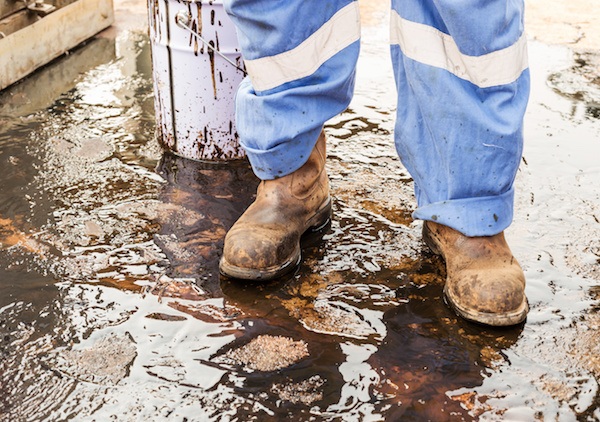Cleaning up your place of business following a disaster or major storm comes with risks that you may not think about. Your team might be focused on avoiding holes and miss a loose electrical line. Or, they might move too quickly through high water and encounter a dangerous snake.
Your team needs to have the right mindset about taking precautions during disaster cleanup. They should also be mindful of the risks associated with cleanup to avoid injuries, contamination, or other health risks.
What Are the Primary Risks Involved in Disaster Cleanup?
OSHA released a helpful fact sheet on natural disaster recovery that should serve as a guide for your team. Take a moment to review these five risk areas so that everyone is aware of how to safely perform disaster cleanup.
1. Be Mindful of Your Overall Health
In the process of cleaning up your place of business, your team might lose track of how long they have been working or push themselves too hard.
Consider scheduling mandatory water and rest breaks at the top of each hour to avoid health risks. In Houston, we know that big storms usually occur in late spring or in the summer, which increases the need for breaks working in hot environments.
Additionally, you should have first-aid kits on-hand to address cuts or abrasions. If your place of business is especially dangerous following a disaster, make sure everyone has the local emergency phone number handy to call for help.
2. Ensure the Proper Tools and Equipment
Your team needs to wear the right clothing, personal protective equipment, and tools to perform disaster cleanup.
OSHA recommends watertight boots, gloves, long pants, safety glasses, and a hard hat. Sneakers or standard work shoes are not acceptable because they will not prevent injuries, punctures, or bites.
Your team also needs the proper tools such as a wooden stick to maneuver through dangerous areas and locate holes before taking each step. If your team needs to use ladders or scaffolds to reach higher areas, ensure that the equipment is supported and not at risk of collapsing.
3. Be Aware of Electrical Hazards
One of the most dangerous aspects of disaster cleanup is avoiding electrical shock. There are many different considerations that your team needs to be aware of:
- Do not touch downed power lines
- Do not assume that a power line is de-energized
- Look out for underground lines when clearing debris
- Avoid loose lines or electrical equipment that has been in contact with water
- Use ground-fault circuit interrupters (GFCIs) when operating electrical equipment in wet locations.
4. Be Vigilant About Chemical Hazards
Coming in contact with hazardous material could have serious health ramifications. Consider these two critical elements when encountering chemicals or hazardous materials:
- Your team should use extreme caution when handling containers that hold unknown or toxic substances, especially if the containers are floating on water. If you decide to remove the container from your worksite, each team member should wear protection for their hands, eyes, and face when handling.
- When handling chemicals or encountering spills, OSHA recommends wearing the appropriate protection and immediately washing your hands and eyes with clean water.
If you have questions about handling hazardous, toxic, or chemical material, contact the Environmental Protection Agency’s National Response Center at 800-424-8802.
5. Be Aware of Fire or Gas Concerns
Another significant risk is the unknown. Specifically, it is difficult to anticipate when a fire might break out or when a gas leak could cause an explosion.
If you smell gas or detect a gas leak, your team should immediately evacuate the area until your service provider can control the leak and ventilate the area.
If you suspect there is a fire risk at your worksite, your team should be aware of the fire evacuation plan to quickly get to safety. Additionally, you should have fire extinguishers on hand and your team should be trained on the proper use.
Receive Support from the City of Houston
When engaging in disaster cleanup efforts, you can contact the City of Houston for Disaster Assistance.
The city will be able to walk you through the process of recommend additional assistance to ensure that your team and business are protected.
